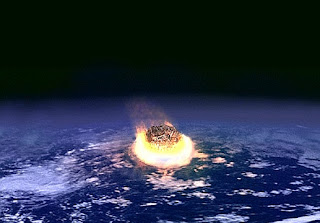As you all should know, yesterday Jurassic Forest closed its doors for the final time in 2012, capping off the 2012 season. This week on Mesozoic Mondays we wanted to just give a quick summary of the last year and thank everyone who helped make it a success.
We opened up at the end of April this year, and saw a great two months of school trips. We had many first-timers, and several repeats from last year, which made the school season great. We had all ages from Kindergarten to high school, doing both our 'self guided' basic packages, but mainly taking advantage of our curriculum based All-Inclusive packages. If you're looking for somewhere to bring your school this year, check out our Educational Resource Area of our website.
As summer rolled in, we welcomed many corporate family events, birthday parties, and special events. Highlights from special events include Dr. Phil Currie and Dr. Eva Koppelhus from the University of Alberta talking about their dinosaur hunting trip to Antarctica, and Dinosaur George who gave one of his always-entertaining talks on dinosaurs.
 |
| Dr. Phil Currie giving a talk on dinosaurs and field work in Alberta |
 |
| Dinosaur George in front of a very packed crowd for one of his several shows |
Of course, this year also featured many talks from local PhD students on pterosaurs and dinosaurs, as well as many visitors from the Royal Alberta Museum, like Peter Heule (the "bug guy"). We also had another visit from the Grande Prairie Regional College, who brought out some real fossils to show off and talk about the finds in the region, plus Dr. Phil Bell from the not-yet-built Philip J. Currie Dinosaur Museum in Grande Prairie. Of course we also had some local reptile, amphibian, bat, fish, and plant experts out. All-in-all, a pretty eventful year for special events! We're already thinking about events for next year, so if anyone has any ideas or suggestions, we'd love to hear them.
Of course, we can't forget to mention that we welcomed two brand new dinosaurs into the park! Well technically, we welcomed one Troodon, and three Pachyrhinosaurus, but who's counting? We had another great day with some helicopter dino-landings to bring in the Pachyrhinosaurus', and the new dinos were definitely a success. Both dinosaurs are commonly found in Alberta, and Pachyrhinosaurus is especially well known from the Grande Prairie region, and Dinosaur Provincial Park.
 |
| One Pachyrhinosaurus flying through the air! |
As summer ended and fall began, we had more school trips to cap off the year. This year was a great year at Jurassic Forest and we already can't wait for next year. Unfortunately, the dinos need to have a break for the winter since they are pretty tired from the long season.
We may be closed to the public, but we are still pretty busy already planning next year. We have some great new ideas, so watch Twitter, Facebook, and sign up for our newsletter for more details throughout the next few months! Our E-store is also available for any dino-related Christmas (or other) gifts you may want to purchase, and you can always give us a call at 780-470-2446 for more information! Also, Mesozoic Mondays will be continuing, although it may be less often than weekly. Keep checking for more details!
We hope everyone had a great year this year, and can't wait for the 2013 season! See you all in April!










.png)

